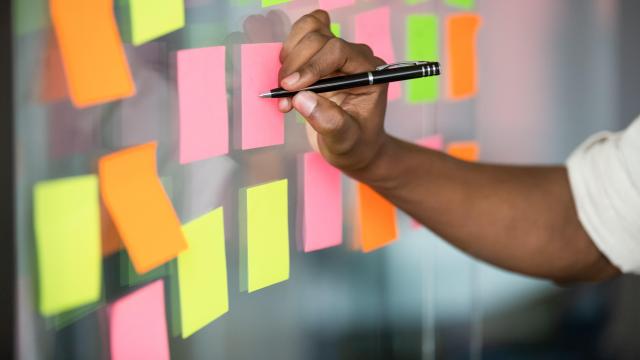If you focus too hard on your “learning style,” you run the risk of getting boxed in by it. Whether you prefer to learn visually, auditorily, by reading or writing, or kinesthetically, there are benefits to using methods that align with all four of the main styles—and times when you’ll have to, whether you like it or not. Each style has something to offer, so embrace what works within each of them.
Of all the styles, kinesthetic methods can be a little more confusing—but still worth learning. Here are a few ways to study kinesthetically to help you really grasp the subject at hand.
What is kinesthetic learning?
First, let’s define “kinesthetic,” since it’s a word that doesn’t crop up much. According to the dictionary, it refers to anything “having to do with movement or sensation, especially within the body.” It might even refer to the need to move, especially if you’re someone who’s restless or energetic.
Kinesthetic learning, then, involves your body in some way. It’s hands-on and experiential, having less to do with sitting quietly and reading and more to do with really grasping your material. It’s also about practical application and real-world understanding that extends beyond reading or writing in a classroom.
Make your own study materials
One of the easiest and most effective ways to make regular studying kinesthetic is by using your hands to create your study materials. Instead of using a digital program to quiz yourself, for instance, hand-write your own flashcards. You can create mind maps on a piece of paper or construct models of what you’re learning about. There is plenty of software out there that will create flashcards, mind maps, mock tests, and even notes, but if you value hands-on learning, it might be best to eschew modern luxuries and go back to basics.
Luckily, this doesn’t have to be complicated. If you’re in an astronomy class, for instance, and want to better understand objects’ paths through space, you don’t need modeling clay and wire to create a model. You can ball up some paper to represent celestial objects and arrange them on the table to get a more visual sense of what it all looks like up there.
Move your body while you study
According to Houghton University, even moving your body in a way that isn’t necessarily related to your studies can help you focus and retain more. Chew gum, study at a standing desk, pace while you review, tap your foot, or study in a rocking chair or other semi-mobile seat. Consider switching locations or positions while you study, too. While you’re reading your accounting notes, try standing at the kitchen counter. When it’s time to do flashcards for marketing class, try sitting on the floor.
This advice comes with one cautionary note, however: If you move your body while you study, you may also feel the need to move it during test time to facilitate recall. For online tests, that’s not a huge deal, but for in-person ones, you may be stuck only able to tap your foot or chew gum, so choose a bodily movement that you can replicate in every situation.
Role play or imagine a real-world use case for what you study
The main goal of studying, beyond passing a test, is retaining information that will help you somehow in the real world. Connecting your materials to real life is a key element of retaining them—and kinesthetic techniques can help. Try role playing the real-world application of your subjects (which is so effective that Indeed even recommends it for workers in the professional world, not just students). For example, if you’re studying nursing, role play the exact order in which you take a person’s vital signs, what you say to them while you’re doing it, and how you record it all. Someone else can help you with this by acting as the patient, or you can do it alone, envisioning the scenario. Act out different ways it could go. What do you do if a patient is fidgeting? What do you do if they’re hostile and don’t want to be there? What do you do if you notice something abnormal during the check-up?
You can also imagine real-world scenarios and write them out. Say you’re in a science class and studying the scientific method. Imagine a scientist working on a new idea and preparing to test it out. Write a vignette showing them working through the steps, from observing and questioning something to researching it and forming a hypothesis. Similar to using a mnemonic device, creating a scenario and writing it down can help you remember. During test time, think of your fictional scientist and remember what you had them do.
Work in groups when you study
Working in groups can be risky, especially for those who really need silence and structure, but if you want to incorporate kinesthetic learning into your practice, it’s one of the most recommended methods. You should still structure the group session to make sure it stays on task, but try using the jigsaw method to break up large chunks of text and teach each other about it, or script a role-playing session based on what you’re learning about. Use physical flashcards to quiz one another and take regular breaks to stretch, chitchat, or move locations.

Leave a Reply
You must be logged in to post a comment.